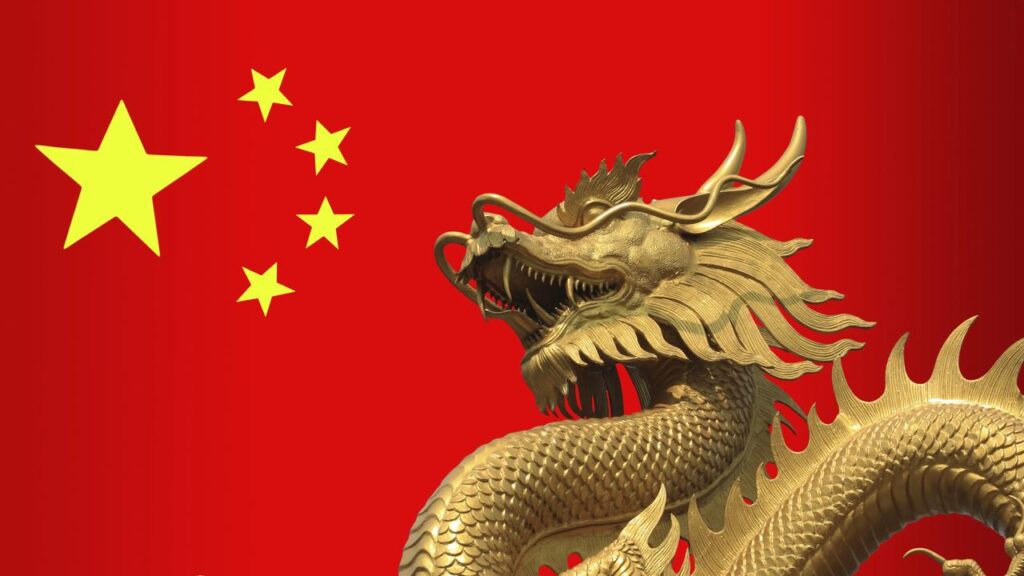Shocking News for Investors
Today one of the top money managers in the world said, yes, China will likely push the price of gold above $20,000, but this is what is really stunning.
(King World News) – Dr. Stephen Leeb: For obvious reasons, the next several months are likely to be very volatile, even more so than the first part of the year. So it’s worth realizing that something that was true during the first 20 years of this century is almost certainly a prelude to the next 20 years and beyond.
Which is to say: Jump on the likely short-term volatility to grab those investments that will resume their role as the leaders in coming decades…
So what are these assets?
Here’s a quick quiz: Rank the following 6 assets/asset categories in order based on which gained most during the first 20 years of this century – 12/31/1999 to 12/31/2019.
(Do it before looking at the correct answer below)
In alphabetical order, they are:
- Bonds (as measured by an index of U.S. government bonds with expiration dates ranging from 5 to 30 years)
- Copper (measured by its price)
- Gold (as measured by its price)
- Iron ore (as measured by its price)
- Silver (as measured by its price)
- Stocks (as measured by the total return of the S&P 500, including reinvesting dividends)
What is the correct order based on performance? Here goes:
- 1. Gold – up 423%
- 2. Copper – up 246%
- 3. Iron ore – up 236%
- 4. Silver – up 230%
- 5. Stocks – up 224%
- 6. Bonds – up 165%.
It’s true. During this century’s first generation, while financial assets like stocks have gotten so much attention, commodities have done far better. And the biggest winner of all has been gold. I confess, while I knew that gold had beaten every other asset by a huge margin, I was surprised to find that copper and iron ore also outperformed stocks. This means – and I know this sounds crazy – that if at the beginning of the century you had purchased 100 pounds of copper and buried it in your backyard, its value today would be greater than if you had invested the same amount of money in an S&P Index fund. And the only reason to sell that copper would be to deploy those proceeds into gold.

China’s Push For $20,000+ Gold
These gains in gold and other commodities are just the start. As I have explained before in these interviews and elaborate on in my forthcoming book China’s Rise and the New Age of Gold, in coming years commodities will become even more important as the key asset class – as gold (which is both a commodity and a currency) in particular will be surging to levels that might sound fantastical, eventually likely reaching $20,000 an ounce or more.
The reason is a transformational shift occurring before our eyes – a shift in economic heft from the developed world, led by the U.S., to the developing world, led by China. The ranking of assets presented above is one manifestation of that shift, which is still in its early stages. After all, financial assets are the province of the developed world, while commodities are the critical drivers of growth in the developing world.
A critical point is that the developing world has a lot further to go before achieving anywhere near the level of the developed world. Per-capita GDP of high-income countries, as defined by the World Bank, is about nine times higher than that of developing countries. That daunting gap in income goes along with a massive differential in population. Only 17% of the world is in that high-income group. The 83% will be the growth drivers, ensuring that ever higher commodity prices will be the inescapable consequence.
A natural question is what happened in the 21st century that catalyzed the developing world. After all, a massive gap in incomes between the powerful countries and the less powerful had persisted for many centuries before it started to close in the past 20 years. The answer? It’s that the spectacular rise of China went hand in hand with an accelerating decline in the U.S. and other leading powers…
The ranking of asset performance is actually about much more than how you could have made money in the past generation. It is also about why so many in this and other wealthy countries missed out on gold. Just consider how much better things would be today for Americans if gold represented a larger portion of household portfolios. If IRAs, for example, had allocated as much to gold as to stocks or bonds, the gains in gold not only would have been much larger but would have meant that the bottom 50% in this country would have been far better off.
But whenever gold was rising, the financial community insisted it was an anomaly. That industry, which is arguably the most important and richest in the U.S., has been largely oblivious to what really is going on. Only a miniscule percentage of financial players and advisors even know how to buy gold, I am talking about physical gold. A certified financial planner at any major financial institution is strongly discouraged if not forbidden to recommend gold or gold-related investments. The leading wealth managers are not only likely to underperform the S&P but will invest next to nothing in gold and other commodities for their clients.
That may be changing at least a little. Warren Buffett and his second-in-command Charlie Munger, who have been among the largest cheerleaders for financial assets, recently took a stake in one of the largest gold miners, Barrick.
The table of best-performing assets is notable for one that isn’t there. It’s oil. Why was oil such a laggard among commodities? Because the U.S. was desperate to become oil-independent. Fracking started to take off in 2011 and at its peak in mid-2020 had added 8 million barrels a day to the world’s oil supply. And yes, we were largely independent. But there were a couple of problems. Foremost fracking on a cash basis lost money every year. The cumulative loss was in the hundreds of billions of dollars. What a terrible lost opportunity: That is money that could have gone into infrastructure, money that could have gone into developing commodities such are rare earths and gallium that will be critical for technologies we will need in the world ahead of us. I put the blame squarely on the financial industry, which financed this historic debacle.

But you can bet that oil will have its day again. A major reason is that among the technologies we have lagged in developing are renewable energies. And to develop renewable energies on the necessary scale will take massive amounts of affordable oil. Also true is that oil is a critical feedstock for many chemicals and materials, demand for which will increase right along with growth in the developing world.
Other evidence of the rise of the new and fall of the old is that this is first time at least in my lifetime that the U.S. does not control one major supply chain. Whether you are talking about electric vehicles, or semiconductors, you have to look to China or other Asian countries such as Taiwan and South Korea.
Rise Of The Printing Machines
If I sound angry, I apologize, but in fact I am angry. Fifty years ago, the U.S. was the greatest country the world has ever seen. But as I have said before, when we went off the gold standard and adopted the petrodollar in order to maintain the dollar as the global reserve currency, we had it too easy – there were no monetary constraints. The jettisoning of the gold-dollar link allowed us to escape the kind of discipline that would have allowed us to remain great.
In a way we now will probably get another chance. As I have argued before, China’s goal is a reserve currency consisting of a basket of currencies backed by gold. This time it will not be a fixed price for gold but a more flexible and rising gold price – one set perhaps in the way central banks now set interest targets. Gold will rise with growth and commodity scarcities.

China’s digital currency is already in place and other countries are following. Digital currencies will be necessary for creating that basket – and that is another area where we need to get on our horse.
I know I may sound utopian when I envision that the U.S. could choose to function as an important part of a world that rises together, rather than trying to go it alone. But I do think it’s possible. We control our fate, and it will become clearer that our choice is to either cooperate with other countries, and in particular with a rising East, or get left out in the cold.
But whatever direction we pick, the best investment you can make is in gold and other commodities. It’s worth remembering some history, when the country’s richest individuals, the Rockefellers and Gettys, built their fortunes more on real assets than on P/E ratios. In tomorrow’s world, those assets will be based on gold and other commodities.



















